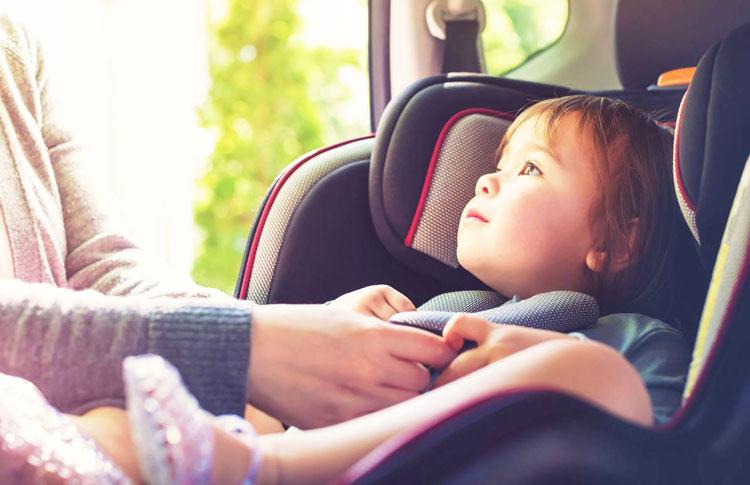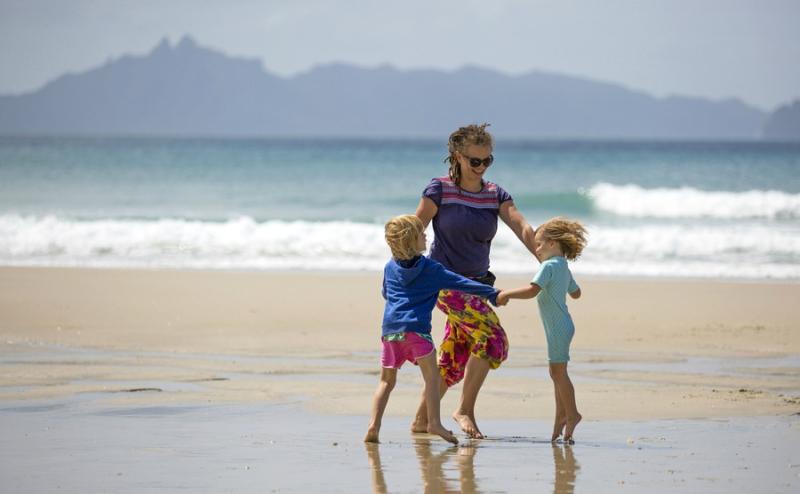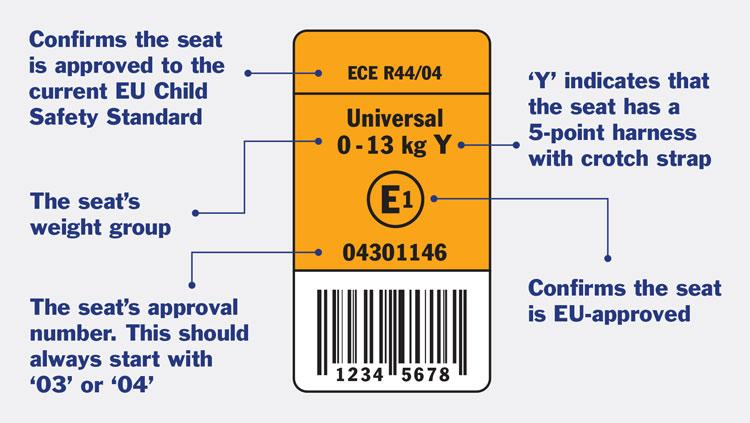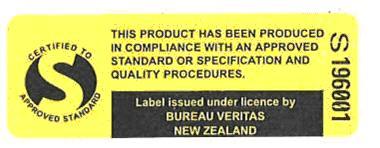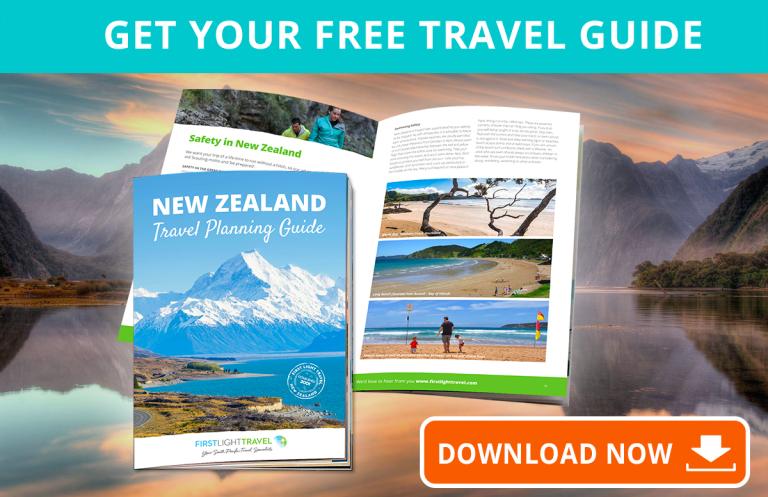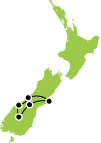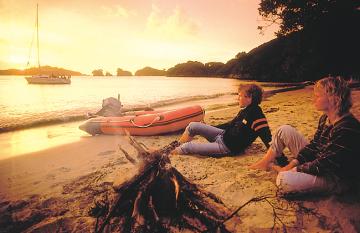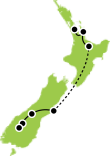
Whether you’re a New Zealander with children exploring more of your home country, or visiting New Zealand from overseas with your family, if you are planning to drive with children in New Zealand then understanding the law as it relates to your child and child restraints is an important part of your travel plans.

Let’s begin with what New Zealand car seat law states regarding the age of the child.
New Zealand Car Seat Law by Age
Any child up until their 7th birthday must be in an appropriate child restraint. “Appropriate” is referring to the height and/or weight limits stated on a car seat – if the child fits within these limits, the restraint is “appropriate” for them.
When a child is 7 years old, in other words between their 7th & 8th birthdays, they must use a child restraint only if there is one available in the vehicle they are travelling in. If there is no spare child restraint available, they are allowed to travel without a car seat.
Once a child reaches 8 years old, in New Zealand they are no longer required by law to use a child restraint.
New Zealand Car Seat Law by Height
In some countries a child must reach a certain height before they can legally travel without a child restraint. In New Zealand, this is not the case. There is no height limit to be aware of, NZ car seat law is solely determined by age.
However, most 7 and 8-year-olds are not tall enough to safely use a vehicle seat belt without the aid of a booster seat so we have best practice standards that we recommend. While it is not law, we encourage families in New Zealand to keep their child in a car seat until they have reached 148cm tall. The car seat they will be in at this stage is a simple booster seat, but this is a child restraint nonetheless.
Take this simple “5 Step Test” to see if your child is big enough to travel without a booster.
- The child can sit on the vehicle seat and their back is fully against the back of the seat.
- The child's knees must bend over the edge of the seat comfortably. If their knees do not reach the edge of the seat, they are not yet big enough.
- The lap portion of the seat belt must be sitting over the top of the thighs. If this belt is sitting higher, or over the stomach the child is not yet big enough.
- The should or sash portion of the seat belt should sit neatly across the shoulder. If the belt is sitting close to the neck the child is too small.
- The child must be able to remain seated, and still for the whole journey in the car - if they wriggle and get themselves out of this position (of good belt fit), they are too small.
Best practice is that a child continues to use a child restraint until they are 148cm (58 in) tall.
Follow your Child Restraint’s Instruction Manual
Checking your child is of an age when they are required to use a child restraint in New Zealand is the first step towards complying with our law. Once you have checked this, then to continue to comply with the law you are required to follow the instruction manual of the particular car seat you are using.
Driver Responsibility
The Land Transport (Road User) Rule 2004 is the legislation that includes information about the use of child restraints. In all clauses relating to the subject, it is stated that the driver is responsible for correctly restraining their passengers. So, regardless of whether you are transporting your own children, or others, if you are driving then you will be responsible for ensuring all children in the vehicle are properly restrained.
Exceptions
In some circumstances, a driver may be exempt from having a child travel in a child restraint. For example, when using public transport in New Zealand, it is not necessary for a child to be restrained. This also applies when using taxis, Uber and any other passenger service vehicle.
You can read the full list of exemptions to NZ car seat law here.
Seating Positions
If your plans include travelling in motorhomes or minivans, you will need to consider the position of any restraints you are using in the vehicle. Child restraints can only be used on vehicle seats which face the front of the vehicle. It is illegal to install a child restraint on any vehicle seat which faces sideways or rearwards.
Car Seats Approved for use in New Zealand
All child restraints sold or used in New Zealand must have been manufactured to a standard that complies with our minimum safety standards for car seats. A car seat’s safety standard is displayed by a sticker or label on the shell or fabric of the restraint. If you are travelling to New Zealand and hope to use your child restraint here, you will need to find the safety standard or compliance sticker to ensure it is accepted here by law.
Child restraints manufactured to two of these safety standards can be purchased elsewhere and used here in New Zealand.
ECE R44 or R129 – European Standard
European standard restraints displaying a sticker like this are also legal for use here in New Zealand. The ECE number must show either: R44/04 or R129/i-Size
Once you have established that your European restraint shows one of these stickers, it can be used in New Zealand.
FMVSS 213 – US Standard (USA Child Car Seat Standard)
The third safety standard which you will often find on child restraints commonly sold in New Zealand is the US standard. However, the law relating to the use of US child restraints in New Zealand is not quite as simple as that which applies to Australian and European standards. So, it may not be possible for you to use your US standard restraint here.
Before any model of US standard car seat is able to be used in New Zealand, it must be tested by a certification agency called Bureau Veritas. Once Bureau Veritas has approved it for use here, every individual restraint must have this yellow compliance sticker applied. This sticker is applied when shipments of car seats arrive in New Zealand.
Because of the need for this compliance sticker to be displayed on US standard restraints, if you buy a car seat in America, it will not have this sticker applied and therefore will not be compliant for use here in New Zealand. This applies even if exactly the same model of a child restraint can be purchased in a store here in New Zealand. The one bought in the US will not have the yellow compliance sticker attached and therefore, strictly speaking, it cannot be used here.
This requirement means that rules relating to visitors travelling with US standard car seats differ to Australian or European standards. Unless you bought your US standard car seat in New Zealand, unfortunately, it will not be compliant for use on our roads.
Hiring Car Seats in New Zealand
An alternative to travelling with your kids’ car seats is to hire them on arrival in New Zealand. This can make for much easier travel and transit. If you choose to take this path you will have a couple of options. These will depend on where you arrive in New Zealand, and how you plan to travel from the airport.
Hiring Car Seats in New Zealand – Rental Vehicle Operators
Conveniently, most rental car and motorhome companies have car seats available as accessories to hire with their vehicles. However, it does pay to research this in advance.
If you plan to hire from one of these companies, you will want to be sure you are dealing with a rental company that provides all of its staff with child restraint training – not just one or two staff members per branch. There are rental vehicle operators in New Zealand who train all of their staff to a level that ensures they can select and install car seats in line with New Zealand law. With a little research and asking questions before you hire, you will find these operators.
A rental vehicle company may install the car seat for you, but there is no legal obligation for them to do so.
And remember, the responsibility of ensuring all passengers are correctly restrained lies with the driver. So, even if a company installs the car seat for you, your driver is still responsible for ensuring it is correctly installed and is being used properly.
While this is the driver’s responsibility, companies in New Zealand have an obligation to exercise “duty of care” to their staff and customers. This means that although they have no legal obligation to install the restraint, they must take care to ensure they have given a customer a seat which is appropriate for the child, is compliant for use on New Zealand roads and that can be correctly installed in the customer’s vehicle. To satisfactorily exercise duty of care, the company must also have given the customer a copy of, or a link to, the seat’s instruction manual so that the customer has the information they need to comply with the law.
Enquire with these companies and ask what level of child restraint training they provide their staff. This will set you on the right path to be sure you are getting a safe child restraint which is appropriate for your child.
Hiring Car Seats in New Zealand – Retailers & Independent Hirers
The alternative to hiring from rental car companies is to use a retailer or independent car seat hire company to rent a child restraint. These companies are more likely to have fully trained staff selecting and installing their car seats, however the arrangements may not be as convenient. The logistics of having them install the car seat in your vehicle before you arrive will need to be organised. It can be done if you plan well and keep in touch with the independent hirer. If you would like some suggestions as to who you can use, contact us here with your arrival location.
Travelling with children is a wonderful way of creating memories and broadening their view on the world. But to do so takes effort! Here’s hoping we’ve cleared up some questions for you so you can travel safely with your little ones and focus on your exciting journey ahead.
About the Author: Danielle Beh is the founder of SitTight Child Restraint Education & Training, a company focused solely on providing education on the laws, legislation and correct use of car seats within New Zealand. She can be contacted directly for further or more detailed information at www.sittight.co.nz
Danielle has worked closely with child restraints on a daily basis for years. Originally as the owner of a busy retail store specializing in the hire and sales of car seats, she has since moved sideways into education. She is a qualified Child Restraint Technician (CRT), a trainer/assessor of CRTs as part of the New Zealand Transport Agency’s child restraint programme and is co-chair of the NZTA’s national child restraint advisory group.
Recent Posts
Blog Categories
Blog archives
- February 2025 (3)
- January 2025 (6)
- December 2024 (12)
- November 2024 (3)
- October 2024 (2)
- July 2024 (2)
- May 2024 (12)
- April 2024 (2)
- March 2024 (2)
- January 2024 (2)
- November 2023 (10)
- October 2023 (4)
- August 2023 (1)
- May 2023 (2)
- April 2023 (2)
- March 2023 (17)
- February 2023 (4)
- January 2023 (4)
- December 2022 (11)
- November 2022 (7)
- October 2022 (1)
- May 2022 (1)
- March 2022 (3)
- February 2022 (3)
- January 2022 (1)
- December 2021 (1)
- August 2021 (1)
- June 2021 (1)
- May 2021 (2)
- February 2021 (1)
- August 2020 (1)
- July 2020 (1)
- May 2020 (1)
- April 2020 (1)
- March 2020 (1)
- January 2020 (1)
- December 2019 (1)
- November 2019 (1)
- October 2019 (1)
- September 2019 (1)
- August 2019 (5)
- July 2019 (2)
- June 2019 (1)
- May 2019 (3)
- April 2019 (1)
- March 2019 (1)
- February 2019 (1)
- January 2019 (1)
- December 2018 (1)
- November 2018 (1)
- September 2018 (1)
- August 2018 (1)
- July 2018 (1)
- June 2018 (1)
- May 2018 (1)
- April 2018 (1)
- March 2018 (1)
- February 2018 (1)
- January 2018 (1)
- December 2017 (1)
- October 2017 (1)
- September 2017 (1)
- August 2017 (1)
- July 2017 (1)
- June 2017 (1)
- May 2017 (1)
- April 2017 (1)
- March 2017 (1)
- February 2017 (1)
- January 2017 (1)
- December 2016 (1)
- November 2016 (1)
- October 2016 (1)
- September 2016 (1)
- August 2016 (1)
- July 2016 (1)
- June 2016 (1)
- May 2016 (1)
- April 2016 (1)
- March 2016 (1)
- February 2016 (1)
- January 2016 (1)
- December 2015 (1)
- November 2015 (1)
- October 2015 (1)
- September 2015 (1)
- August 2015 (1)
- July 2015 (1)
- June 2015 (1)
- May 2015 (1)
- April 2015 (1)
- March 2015 (1)
- February 2015 (1)
- January 2015 (1)
- December 2014 (1)
- November 2014 (1)
- October 2014 (1)
- September 2014 (1)
- July 2014 (1)
- June 2014 (3)
- May 2014 (1)
- April 2014 (1)
- March 2014 (1)
- February 2014 (1)
- January 2014 (1)
- November 2013 (15)
- October 2013 (1)
- September 2013 (1)
- August 2013 (1)
- July 2013 (1)
- May 2013 (1)
- April 2013 (1)
- March 2013 (1)
- February 2013 (1)
- January 2013 (1)
- December 2012 (1)
- November 2012 (2)
- October 2012 (2)
- September 2012 (2)
- August 2012 (2)
- July 2012 (2)
- June 2012 (2)
- May 2012 (2)
- April 2012 (3)
- March 2012 (2)
- February 2012 (2)
- January 2012 (2)
- December 2011 (2)
- November 2011 (1)
- October 2011 (2)
- September 2011 (1)
- August 2011 (1)
- July 2011 (1)
- June 2011 (1)
- May 2011 (1)
- April 2011 (1)
- March 2011 (1)
- February 2011 (1)
- January 2011 (1)
- December 2010 (1)
- November 2010 (1)
- October 2010 (1)
- September 2010 (1)
- August 2010 (1)
- July 2010 (1)
- June 2010 (1)
- May 2010 (1)
- March 2010 (1)
- February 2010 (1)
- January 2010 (1)
- December 2009 (1)
- November 2009 (1)
- October 2009 (1)
- September 2009 (1)
- August 2009 (1)
- July 2009 (1)
- June 2009 (1)
- May 2009 (1)
- April 2009 (1)
- March 2009 (1)
- February 2009 (1)
- January 2009 (1)
- December 2008 (1)
- May 2005 (1)


